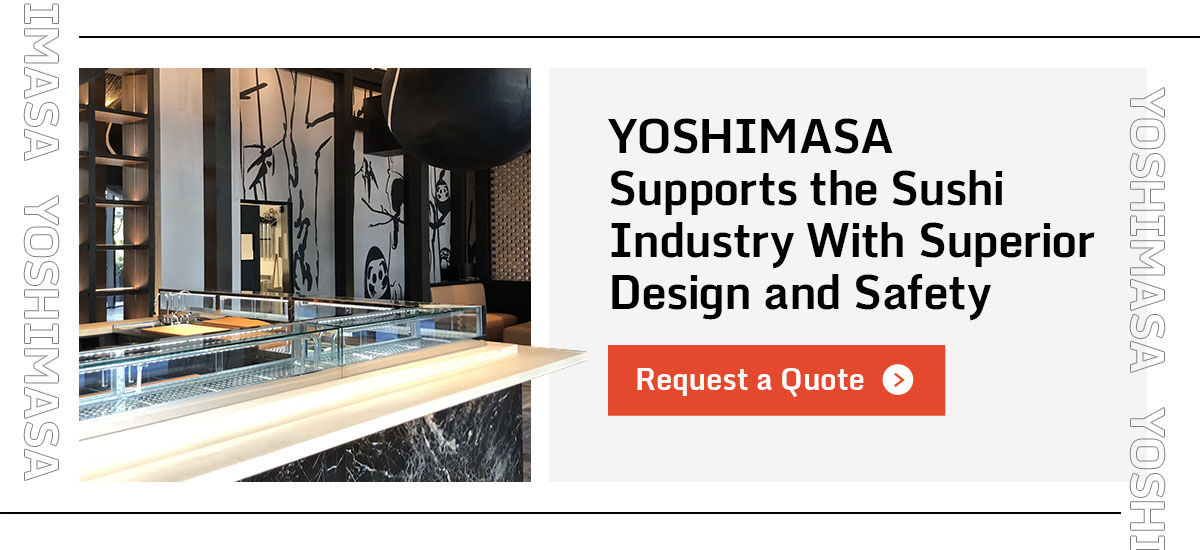Food safety guidelines for sushi ensure the meal is safely handled, prepared, stored and displayed. Plus, the guidelines aim to reduce the occurrence of food-borne illnesses associated with poorly prepared and stored sushi.
Introduction to Food Safety in Sushi Preparation
Food safety is crucial in handling any meal, and sushi is no exception. Taking the necessary precautions to ensure proper sanitation is especially critical for sushi due to the nature of the ingredients used when preparing the dish. Improper handling of seafood can lead to the growth of harmful bacteria and cross-contamination with other cooked foods.
Hygiene is important in restaurants serving sushi because maintaining a clean food processing area can prevent cross-contamination and eliminate pathogens that can make customers ill.
YOSHIMASA’s Commitment to Safe and High-Quality Sushi Display Solutions
At YOSHIMASA, we understand the unique challenges of seafood and sushi preparation, which is why we design our custom-built sushi display cases to enhance food safety. Our sushi display solution adheres to NSF/ANSI 7 sanitation safety standards, allowing you to showcase sushi without compromising freshness and quality.
Essential Food Safety Practices for Sushi Preparation
To ensure food safety, here are some practices restaurants should adhere to when handling and preparing sushi:
- • Hand hygiene: Implement hand hygiene practices, such as meticulous handwashing or using disposable gloves when handling sushi. Taking these precautions in handling raw foods can prevent cross-contamination, reducing the transfer of harmful bacteria.
- • Temperature control: Proper temperature control keeps the sushi from being a breeding ground for pathogens. Sushi must be kept or displayed at a temperature of 41 degrees Fahrenheit or less. To freeze, raw fish must be stored at -4 degrees Fahrenheit for seven days or at -31 degrees Fahrenheit for 15 hours.
- • Surfaces and equipment sanitization: Equipment, utensils and surfaces used in seafood and sushi preparation must be cleaned and sanitized between uses.
Maintaining Standards: The Importance of Sushi Display Maintenance
Regular maintenance of sushi displays helps ensure the cases continue to operate effectively to meet health standards. Maintenance usually involves:
- • Cleaning the case for sanitation
- • Checking the seals to prevent air leaks
- • Monitoring temperature control
- • Inspecting the display for malfunctions
YOSHIMASA Supports the Sushi Industry With Superior Design and Safety
YOSHIMASA designs and manufactures high-quality display cases that meet food safety and handling standards. Our sushi displays are an excellent investment in food safety, as they are custom-built to fit your needs while keeping your food fresh and appealing. Contact us to request a quote.


Leave A Comment